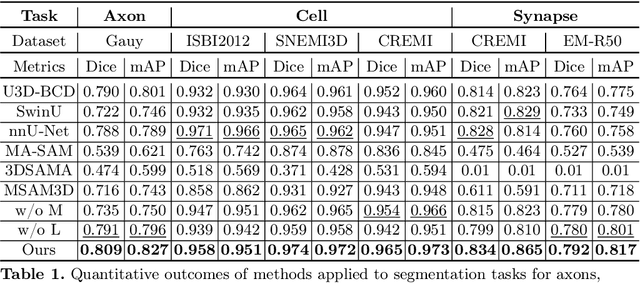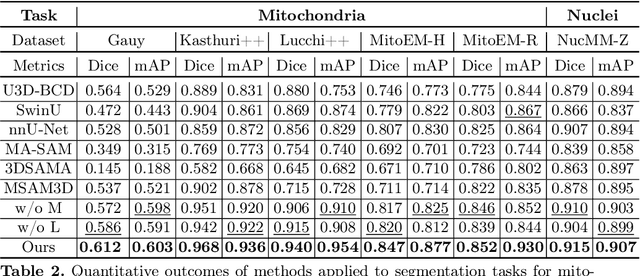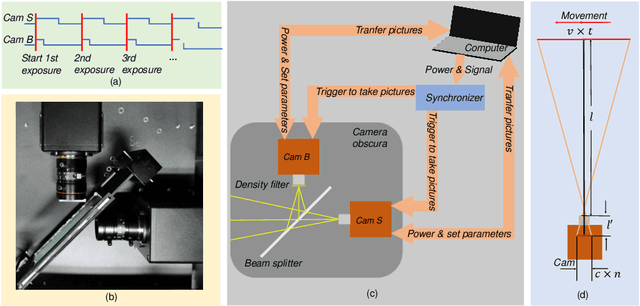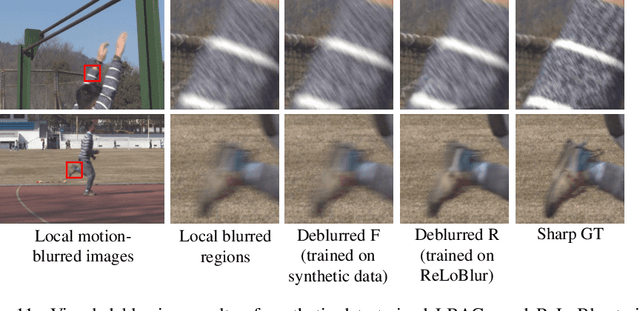Tingting Jiang
ShapeMamba-EM: Fine-Tuning Foundation Model with Local Shape Descriptors and Mamba Blocks for 3D EM Image Segmentation
Aug 26, 2024



Abstract:Electron microscopy (EM) imaging offers unparalleled resolution for analyzing neural tissues, crucial for uncovering the intricacies of synaptic connections and neural processes fundamental to understanding behavioral mechanisms. Recently, the foundation models have demonstrated impressive performance across numerous natural and medical image segmentation tasks. However, applying these foundation models to EM segmentation faces significant challenges due to domain disparities. This paper presents ShapeMamba-EM, a specialized fine-tuning method for 3D EM segmentation, which employs adapters for long-range dependency modeling and an encoder for local shape description within the original foundation model. This approach effectively addresses the unique volumetric and morphological complexities of EM data. Tested over a wide range of EM images, covering five segmentation tasks and 10 datasets, ShapeMamba-EM outperforms existing methods, establishing a new standard in EM image segmentation and enhancing the understanding of neural tissue architecture.
Amodal Segmentation for Laparoscopic Surgery Video Instruments
Aug 02, 2024Abstract:Segmentation of surgical instruments is crucial for enhancing surgeon performance and ensuring patient safety. Conventional techniques such as binary, semantic, and instance segmentation share a common drawback: they do not accommodate the parts of instruments obscured by tissues or other instruments. Precisely predicting the full extent of these occluded instruments can significantly improve laparoscopic surgeries by providing critical guidance during operations and assisting in the analysis of potential surgical errors, as well as serving educational purposes. In this paper, we introduce Amodal Segmentation to the realm of surgical instruments in the medical field. This technique identifies both the visible and occluded parts of an object. To achieve this, we introduce a new Amoal Instruments Segmentation (AIS) dataset, which was developed by reannotating each instrument with its complete mask, utilizing the 2017 MICCAI EndoVis Robotic Instrument Segmentation Challenge dataset. Additionally, we evaluate several leading amodal segmentation methods to establish a benchmark for this new dataset.
PLUG: Revisiting Amodal Segmentation with Foundation Model and Hierarchical Focus
May 25, 2024Abstract:Aiming to predict the complete shapes of partially occluded objects, amodal segmentation is an important step towards visual intelligence. With crucial significance, practical prior knowledge derives from sufficient training, while limited amodal annotations pose challenges to achieve better performance. To tackle this problem, utilizing the mighty priors accumulated in the foundation model, we propose the first SAM-based amodal segmentation approach, PLUG. Methodologically, a novel framework with hierarchical focus is presented to better adapt the task characteristics and unleash the potential capabilities of SAM. In the region level, due to the association and division in visible and occluded areas, inmodal and amodal regions are assigned as the focuses of distinct branches to avoid mutual disturbance. In the point level, we introduce the concept of uncertainty to explicitly assist the model in identifying and focusing on ambiguous points. Guided by the uncertainty map, a computation-economic point loss is applied to improve the accuracy of predicted boundaries. Experiments are conducted on several prominent datasets, and the results show that our proposed method outperforms existing methods with large margins. Even with fewer total parameters, our method still exhibits remarkable advantages.
Beyond Score Changes: Adversarial Attack on No-Reference Image Quality Assessment from Two Perspectives
Apr 24, 2024Abstract:Deep neural networks have demonstrated impressive success in No-Reference Image Quality Assessment (NR-IQA). However, recent researches highlight the vulnerability of NR-IQA models to subtle adversarial perturbations, leading to inconsistencies between model predictions and subjective ratings. Current adversarial attacks, however, focus on perturbing predicted scores of individual images, neglecting the crucial aspect of inter-score correlation relationships within an entire image set. Meanwhile, it is important to note that the correlation, like ranking correlation, plays a significant role in NR-IQA tasks. To comprehensively explore the robustness of NR-IQA models, we introduce a new framework of correlation-error-based attacks that perturb both the correlation within an image set and score changes on individual images. Our research primarily focuses on ranking-related correlation metrics like Spearman's Rank-Order Correlation Coefficient (SROCC) and prediction error-related metrics like Mean Squared Error (MSE). As an instantiation, we propose a practical two-stage SROCC-MSE-Attack (SMA) that initially optimizes target attack scores for the entire image set and then generates adversarial examples guided by these scores. Experimental results demonstrate that our SMA method not only significantly disrupts the SROCC to negative values but also maintains a considerable change in the scores of individual images. Meanwhile, it exhibits state-of-the-art performance across metrics with different categories. Our method provides a new perspective on the robustness of NR-IQA models.
Defense Against Adversarial Attacks on No-Reference Image Quality Models with Gradient Norm Regularization
Mar 18, 2024Abstract:The task of No-Reference Image Quality Assessment (NR-IQA) is to estimate the quality score of an input image without additional information. NR-IQA models play a crucial role in the media industry, aiding in performance evaluation and optimization guidance. However, these models are found to be vulnerable to adversarial attacks, which introduce imperceptible perturbations to input images, resulting in significant changes in predicted scores. In this paper, we propose a defense method to improve the stability in predicted scores when attacked by small perturbations, thus enhancing the adversarial robustness of NR-IQA models. To be specific, we present theoretical evidence showing that the magnitude of score changes is related to the $\ell_1$ norm of the model's gradient with respect to the input image. Building upon this theoretical foundation, we propose a norm regularization training strategy aimed at reducing the $\ell_1$ norm of the gradient, thereby boosting the robustness of NR-IQA models. Experiments conducted on four NR-IQA baseline models demonstrate the effectiveness of our strategy in reducing score changes in the presence of adversarial attacks. To the best of our knowledge, this work marks the first attempt to defend against adversarial attacks on NR-IQA models. Our study offers valuable insights into the adversarial robustness of NR-IQA models and provides a foundation for future research in this area.
Exploring Vulnerabilities of No-Reference Image Quality Assessment Models: A Query-Based Black-Box Method
Jan 17, 2024Abstract:No-Reference Image Quality Assessment (NR-IQA) aims to predict image quality scores consistent with human perception without relying on pristine reference images, serving as a crucial component in various visual tasks. Ensuring the robustness of NR-IQA methods is vital for reliable comparisons of different image processing techniques and consistent user experiences in recommendations. The attack methods for NR-IQA provide a powerful instrument to test the robustness of NR-IQA. However, current attack methods of NR-IQA heavily rely on the gradient of the NR-IQA model, leading to limitations when the gradient information is unavailable. In this paper, we present a pioneering query-based black box attack against NR-IQA methods. We propose the concept of score boundary and leverage an adaptive iterative approach with multiple score boundaries. Meanwhile, the initial attack directions are also designed to leverage the characteristics of the Human Visual System (HVS). Experiments show our method outperforms all compared state-of-the-art attack methods and is far ahead of previous black-box methods. The effective NR-IQA model DBCNN suffers a Spearman's rank-order correlation coefficient (SROCC) decline of 0.6381 attacked by our method, revealing the vulnerability of NR-IQA models to black-box attacks. The proposed attack method also provides a potent tool for further exploration into NR-IQA robustness.
BLADE: Box-Level Supervised Amodal Segmentation through Directed Expansion
Jan 04, 2024



Abstract:Perceiving the complete shape of occluded objects is essential for human and machine intelligence. While the amodal segmentation task is to predict the complete mask of partially occluded objects, it is time-consuming and labor-intensive to annotate the pixel-level ground truth amodal masks. Box-level supervised amodal segmentation addresses this challenge by relying solely on ground truth bounding boxes and instance classes as supervision, thereby alleviating the need for exhaustive pixel-level annotations. Nevertheless, current box-level methodologies encounter limitations in generating low-resolution masks and imprecise boundaries, failing to meet the demands of practical real-world applications. We present a novel solution to tackle this problem by introducing a directed expansion approach from visible masks to corresponding amodal masks. Our approach involves a hybrid end-to-end network based on the overlapping region - the area where different instances intersect. Diverse segmentation strategies are applied for overlapping regions and non-overlapping regions according to distinct characteristics. To guide the expansion of visible masks, we introduce an elaborately-designed connectivity loss for overlapping regions, which leverages correlations with visible masks and facilitates accurate amodal segmentation. Experiments are conducted on several challenging datasets and the results show that our proposed method can outperform existing state-of-the-art methods with large margins.
Mobile Image Restoration via Prior Quantization
May 10, 2023



Abstract:In digital images, the performance of optical aberration is a multivariate degradation, where the spectral of the scene, the lens imperfections, and the field of view together contribute to the results. Besides eliminating it at the hardware level, the post-processing system, which utilizes various prior information, is significant for correction. However, due to the content differences among priors, the pipeline that aligns these factors shows limited efficiency and unoptimized restoration. Here, we propose a prior quantization model to correct the optical aberrations in image processing systems. To integrate these messages, we encode various priors into a latent space and quantify them by the learnable codebooks. After quantization, the prior codes are fused with the image restoration branch to realize targeted optical aberration correction. Comprehensive experiments demonstrate the flexibility of the proposed method and validate its potential to accomplish targeted restoration for a specific camera. Furthermore, our model promises to analyze the correlation between the various priors and the optical aberration of devices, which is helpful for joint soft-hardware design.
Diffusion Action Segmentation
Mar 31, 2023Abstract:Temporal action segmentation is crucial for understanding long-form videos. Previous works on this task commonly adopt an iterative refinement paradigm by using multi-stage models. Our paper proposes an essentially different framework via denoising diffusion models, which nonetheless shares the same inherent spirit of such iterative refinement. In this framework, action predictions are progressively generated from random noise with input video features as conditions. To enhance the modeling of three striking characteristics of human actions, including the position prior, the boundary ambiguity, and the relational dependency, we devise a unified masking strategy for the conditioning inputs in our framework. Extensive experiments on three benchmark datasets, i.e., GTEA, 50Salads, and Breakfast, are performed and the proposed method achieves superior or comparable results to state-of-the-art methods, showing the effectiveness of a generative approach for action segmentation. Our codes will be made available.
Real-world Deep Local Motion Deblurring
Apr 18, 2022



Abstract:Most existing deblurring methods focus on removing global blur caused by camera shake, while they cannot well handle local blur caused by object movements. To fill the vacancy of local deblurring in real scenes, we establish the first real local motion blur dataset (ReLoBlur), which is captured by a synchronized beam-splitting photographing system and corrected by a post-progressing pipeline. Based on ReLoBlur, we propose a Local Blur-Aware Gated network (LBAG) and several local blur-aware techniques to bridge the gap between global and local deblurring: 1) a blur detection approach based on background subtraction to localize blurred regions; 2) a gate mechanism to guide our network to focus on blurred regions; and 3) a blur-aware patch cropping strategy to address data imbalance problem. Extensive experiments prove the reliability of ReLoBlur dataset, and demonstrate that LBAG achieves better performance than state-of-the-art global deblurring methods without our proposed local blur-aware techniques.
 Add to Chrome
Add to Chrome Add to Firefox
Add to Firefox Add to Edge
Add to Edge